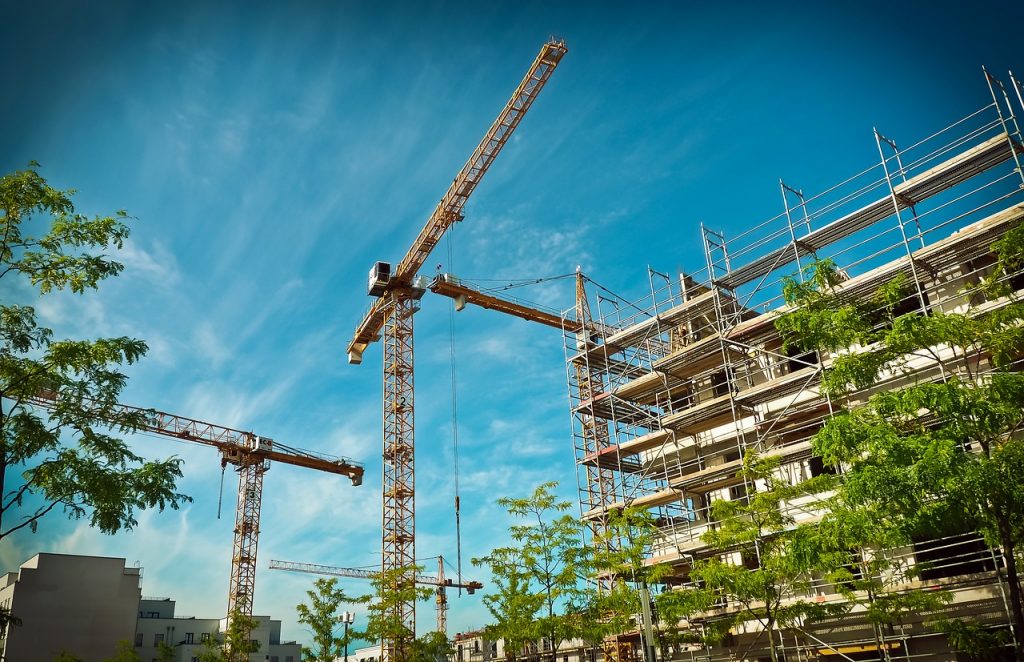5 Reasons that Make Steel Buildings Eco-Friendly

What makes steel buildings eco-friendly?
- Less construction waste
- Durable
- Solar power capabilities
- High fire-resistance
- Recyclable
Steel has had many uses in construction, with the most popular, being for structural support. Fabricated steel products like pipes, beams, reinforced bars, have long been used to provide sturdiness to a building and improve its overall structural integrity. With this in mind, it’s no surprise that eco-friendly steel buildings should be considered over other types of materials. Continue reading to learn why.
Less construction waste
One of the advantages of steel as a building material is that they produce less construction waste compared to other materials. Clutter around a worksite would only lower the efficiency of construction processes — on-site workers would have difficulty in simply navigating around the space because of litter that’s just sprawled everywhere.
You won’t find the same situation when it comes to steel. This is because you’ll get only the right volume of steel materials that you need for a particular project. For example, ordering from a trusted steel supplier like Metal Exponents allows you to get only what you need. You’ll be provided with an accurate estimate of how much steel sheets, pipes, or structural frameworks your building will require.
Durable

While steel is already durable in itself, there are many heat treatment and fabrication processes that improve upon their durability. These processes create alterations on the steel’s grain structuring, allowing it to emphasize properties like strength, tensile strength, hardenability, corrosion resistance, and the like. For example, in steel galvanization, a layer of zinc coating on the steel product can already make the entire product withstand environmental factors that may cause it to rust and oxidize.
When these materials are used for building construction, they can provide durability that other materials won’t be able to. A better way to illustrate this is by examining structural wood products like beams, planks, and trusses. Although the material is sturdy, they can easily lose their quality in the face of environmental conditions. If the wood is soaked in rainwater for a prolonged time period, there may be rotting that can occur on the wood’s exterior.
If these products are replaced with steel counterparts, not even water can alter the steel’s physical properties. This is because they have been reinforced and have been designed to resist against conditions that can potentially damage the product.
Solar power capabilities
There has been an on-going trend to find sustainable sources of energy, like wind, hydro, geothermal, solar, and the like. As much as possible, industries are trying to turn away from non-renewable sources like fossil fuels in terms of electric generation. To lessen the burden on the electrical grid, residential and commercial spaces have been turning towards more commercially-available storage of renewable energy, like solar panels.
With this in mind, steel buildings are far more equipped to support solar panels that are situated at roofs of buildings. Each solar panel (also known as photovoltaic panels) can weigh anywhere from 30 lbs. to 50 lbs. Since steel has high tensile strength, it can easily provide support for these solar panels. Steel beams in particular have a bending strength of around 6,100 lbs. per square inch, meaning they won’t have difficulty in accommodating solar as a renewable energy source.
High fire-resistance

Many causes of building fires can be attributed to faulty electrical wiring, unattended kitchen appliances, gas leaks, and the like. As much as possible, every part of a structure should be regularly inspected to ensure that it complies with fire safety codes.
If you don’t already know, structural steel can also be classified as non-combustible. Its high fire-resistance rating means it makes materials like pipes and studs suitable for environments that have extreme heat and pressure conditions. In the event of a fire, a building that has been built with predominantly steel materials would be protected. The fire won’t be able to spread unmitigated to other parts of the building, which helps in controlling it better.
For surrounding buildings, this type of scenario only presents a minimal danger to them, because the fire can easily be dampened. Fires can produce a high level of carbon dioxide emissions in the atmosphere. More than that, it could also potentially cause a number of respiratory problems once the smoke enters the respiratory system of a person. As such, a steel building would easily prevent this situation from becoming worse due to its non-combustibility.
Recyclable
Let’s go back to the example of building materials like wood and plastic. Wood can no longer be recycled once its fibers have already rotten. While plastic can still be recycled to a degree, they’re not necessarily eco-friendly and are not really ideal for structural applications. This is why steel is a welcome addition — most of them can still be recycled and repurposed for more functional uses.
Many of the structural steel that is in buildings have actually been repurposed — around 40% worldwide. Several factors can be attributed to this: steel is able to retain its physical properties even after reprocessing, and metal refineries are able to reprocess the recycled material with relative ease. The resulting end-products can still be redistributed for further use.
Key Takeaway
The many advantages of eco-friendly steel buildings can be credited to the properties of steel. It has a high level of durability, fire resistance, and machinability. Steel adds reliable support and they can also be used alongside other building materials. No doubt that many buildings in the future would begin incorporating more steel into their structure — the benefits of this alloy are just simply too important to ignore.


